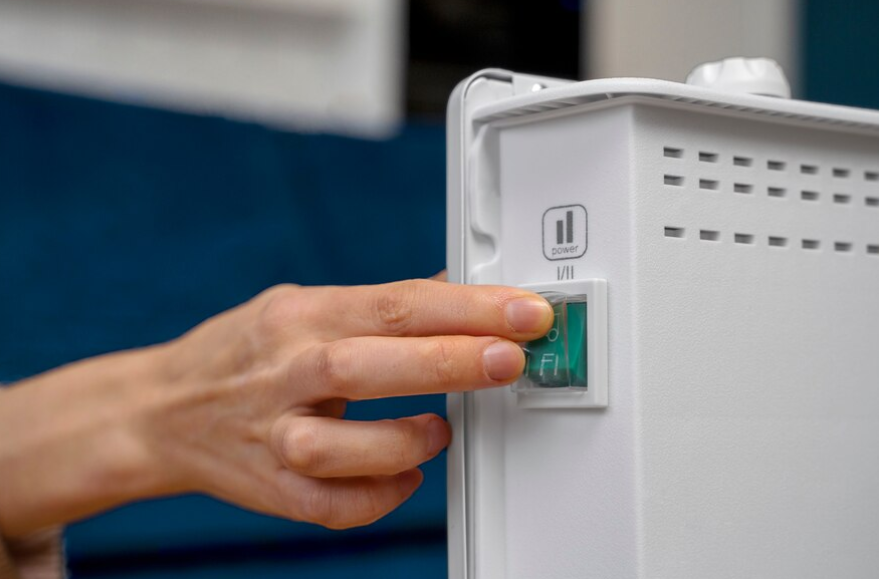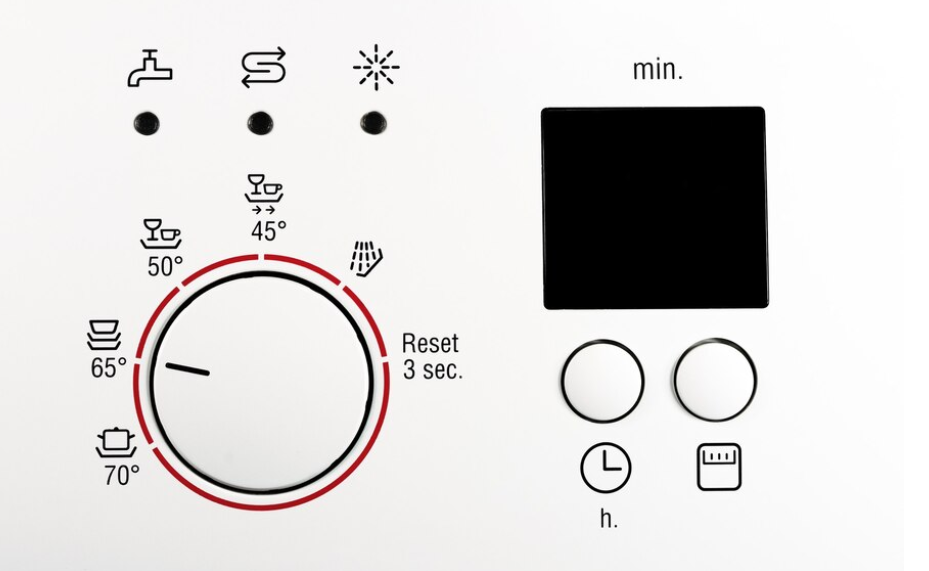acf domain was triggered too early. This is usually an indicator for some code in the plugin or theme running too early. Translations should be loaded at the init action or later. Please see Debugging in WordPress for more information. (This message was added in version 6.7.0.) in /www/wwwroot/leadcont.com/blog/wp-includes/functions.php on line 612117950 NW 53rd Street Suite 337
Miami, Florida 33166

A hot water heater is an indispensable appliance in every household, providing us with the warmth we need for showers, dishes, laundry, and cooking. However, when it comes to setting up and maintaining a water heater, many people overlook the crucial role temperature plays in both energy consumption and safety. By adjusting your water heater settings properly, you can enhance your comfort, protect your family from burns, and reduce your energy bills.
Over time, water heaters can develop issues like sediment buildup, thermostat malfunctions, or even leaks. Environmental factors such as mineral-rich water or aging components may also play a role in reducing your heater’s efficiency. Understanding these causes is essential for troubleshooting and resolving the issue.
In this expert guide, we’ll walk you through the top 7 reasons your water heater might not be working properly. We’ll also provide quick and easy solutions to help you restore hot water without the hassle. Whether you have a tank or a tankless model, we’ve got you covered. Let’s get your water heater running smoothly again while ensuring it operates safely and efficiently for the long term.
The temperature setting of your water heater directly impacts your household’s safety, energy consumption, and overall comfort. A temperature that’s too high can result in accidental burns, while a setting that’s too low can leave you with lukewarm or insufficiently hot water.
The U.S. Department of Energy (DOE) recommends setting your hot water heater to 120°F (49°C). This temperature provides a perfect balance between comfort, safety, and energy efficiency. Let’s explore the key benefits of this temperature range:
Energy Efficiency: When your water heater is set to 120°F, it uses significantly less energy than higher temperature settings, which helps you lower your utility bills.
Safety: Water temperatures higher than 120°F can cause severe burns, especially to young children and the elderly. At 120°F, the risk of scalding is minimal.
Comfort: This temperature is suitable for almost all daily activities, including showering, dishwashing, and laundry. It’s hot enough to be comfortable but not dangerously hot.
Although it may seem that a higher temperature would provide hotter water faster, it comes with a set of risks and drawbacks:
| Temperature | Potential Risks |
| 130°F (54°C) | Risk of third-degree burns within 30 seconds of exposure. |
| 140°F (60°C) | Scalding can occur in just a few seconds. High energy consumption. |
| 160°F (71°C) | Extreme burn risk. Often seen in commercial water heaters. |
Burn Risk: Water temperatures above 120°F increase the risk of burns. Children and older adults are particularly vulnerable to severe burns.
Increased Energy Costs: Higher temperatures mean your water heater will need more energy to maintain those high levels, causing higher monthly utility bills.
Shorter Lifespan: Constantly running at high temperatures can shorten the lifespan of your water heater due to the additional strain on the system.

Lowering the temperature to 120°F (49°C) can reduce your water heater’s energy consumption by up to 10% annually and significantly lower the chance of scalding.
Setting your water heater temperature too low can also have consequences, albeit different ones.
| Temperature | Potential Consequences |
| 100°F (37°C) | Water may feel cool, which is uncomfortable for showers. |
| 90°F (32°C) | Water may not be warm enough for washing dishes or laundry. |
| 80°F (27°C) | Water feels cold and inefficient for household tasks. |
Inadequate Water for Cleaning: If your water heater is set too low, you may struggle with tasks like washing dishes or doing laundry, as water that’s too cold can be ineffective.
Increased Risk of Bacteria Growth: At lower temperatures, especially under 120°F, bacteria like Legionella can grow in your water heater. This is dangerous and can lead to health risks.
Inefficient Performance: Your water heater will need to work harder to provide hot water when you need it, especially if the temperature is set too low.
Setting your water heater to 120°F is the sweet spot—this ensures you’re getting hot water for all your needs, maintaining safety, and optimizing energy usage.
Knowing how to adjust your water heater is essential for maintaining the right temperature and efficiency. Below are step-by-step guides for both electric and gas water heaters.
Turn Off the Power: Before making adjustments, always turn off the power to your electric water heater from the circuit breaker.
Locate the Thermostat: Most electric water heaters have two thermostats—one for the top element and one for the bottom. They are often located under an access panel.
Use a Flat-Head Screwdriver: Adjust the dial of the thermostat to 120°F. It’s a good practice to check both thermostats and ensure they’re at the same temperature.
Turn the Power Back On: Once you’ve set the desired temperature, restore the power to the water heater and wait for it to heat up.

Locate the Gas Control Valve: This is typically at the bottom of the unit, near the gas pipe.
Turn Off the Gas: Ensure the gas supply is turned off before making any adjustments.
Set the Temperature: Adjust the dial to the desired setting (120°F). Some units may have a more specific control system, so consult your water heater’s manual if necessary.
Turn On the Gas: After adjusting the setting, restore the gas supply and light the pilot light (if applicable).
Many modern water heaters come equipped with advanced modes that help reduce energy consumption.
Eco Mode is a feature found in some energy-efficient water heaters. It adjusts the water heater’s operation to minimize energy usage during off-peak hours or when demand is low. By lowering the temperature during times when hot water usage is minimal, Eco Mode can significantly reduce electricity or gas usage.
When you’re away from home for an extended period, Vacation Mode temporarily reduces the temperature of your water heater to save energy. In Vacation Mode, the water heater keeps the water at a safe, low temperature, preventing heat loss and reducing your energy consumption. Be sure to turn this mode off when you return to avoid uncomfortable water temperatures.
Even with the best settings, problems can arise. Let’s explore some common issues and how to troubleshoot them.
| Problem | Potential Cause | Solution |
| No Hot Water | Thermostat too low or faulty | Check thermostat settings, inspect heating elements. |
| Water Temperature Too High | Incorrect thermostat setting | Adjust to 120°F. If the thermostat is faulty, consider replacing it. |
| Inconsistent Temperature | Sediment buildup, faulty thermostat | Flush tank to remove sediment. Replace thermostat if necessary. |
| Water Heater Leaking | Corroded tank or damaged valve | Inspect for leaks. If the tank is rusted, consider replacement. |
Flushing the Tank: Sediment buildup inside the tank can cause inconsistent heating and efficiency loss. Flushing the tank once a year can help keep the system running smoothly.
Replacing Faulty Thermostats: If you notice the water temperature fluctuating or not reaching the desired setting, a malfunctioning thermostat may be to blame.
Addressing Leaks: Leaks in the tank or pipes can lead to both water damage and increased energy costs. If the tank is leaking, it may need replacement.
Maintenance Tips for Long-Lasting Water Heater Performance
Regular maintenance can significantly extend the lifespan of your water heater and ensure it operates at peak efficiency.
Flush the Tank: Remove sediment buildup by draining the tank once a year.
Inspect for Leaks: Check pipes and connections for any signs of leakage.
Check the Anode Rod: The anode rod helps prevent corrosion inside the tank. Check it annually and replace it if it’s heavily corroded.
Test the Temperature: Ensure the thermostat is still set to 120°F to avoid wasting energy.
Insulate the Tank: Insulating your water heater can help reduce heat loss, improving energy efficiency.
While many water heater issues can be handled with simple DIY fixes, there are times when professional help is necessary. If you encounter any of the following, it’s time to call in a plumber or technician:
Persistent leaks that cannot be fixed by tightening connections.
A water heater that fails to heat water despite proper settings.
If you hear strange noises (such as popping or rumbling), indicating sediment buildup or malfunctioning components.
You notice a significant increase in your energy bills without any changes in usage.
A licensed plumber can diagnose the problem and perform repairs or replacements as necessary.
In conclusion, setting your hot water heater to the right temperature is essential for safety, energy savings, and comfort. By adjusting your thermostat to 120°F (49°C), you can enjoy hot water without risking burns, reduce energy consumption, and extend the life of your appliance.
Regular maintenance, troubleshooting, and using advanced features like Eco Mode and Vacation Mode can further optimize your water heater’s performance. If you’re unsure about making adjustments, don’t hesitate to contact a professional to ensure everything runs smoothly. At LeadCont, we offer a free quote and are here to help you with all your water heater needs. Contact us today to ensure your system is running efficiently and safely.
Ever find yourself staring at your computer screen a good consulting slogan to come to mind? Oftentimes.
